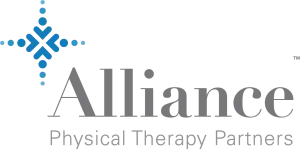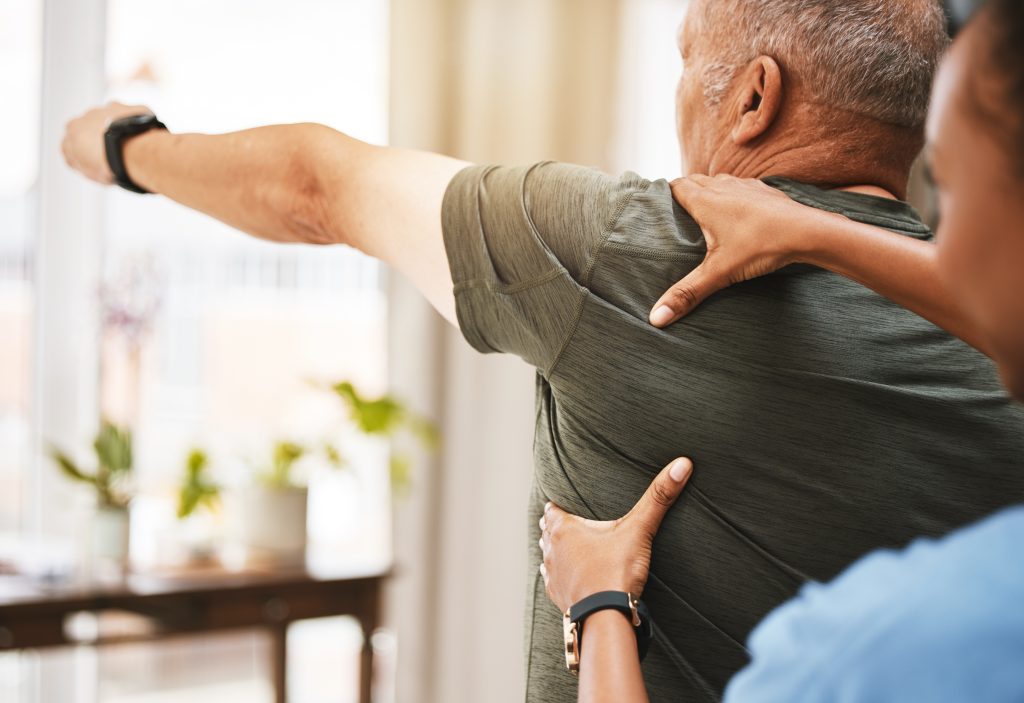The shoulder is made up of four joints, three bones, four tendons and three groups of muscles. With so many different parts, it can be hard to determine an exact injury when it feels like it’s all coming from the same place, especially when many shoulder injuries have overlapping symptoms.
For instance, tearing your rotator cuff can feel similar to a labrum tear. So how can you tell the difference?
Read on to learn about the two shoulder tears, how they differ and how to treat the shoulder pain. In the end, we’ll help you figure out how you can tell the difference between a rotator cuff tear and a labrum tear.
What is a rotator cuff tear?
Your rotator cuff is a group of muscles and tendons located around the shoulder joint. Its purpose is to keep the ball of your upper arm bone (humerus) within the shoulder socket. It controls the shoulder joint movement, allowing you to lift and move your arms.
Your rotator cuff can have a partial or complete tear due to overuse or falling with an outstretched arm. Degeneration of the rotator cuff as you age can also increase the risk of tearing the muscles.
It’s quite common to sustain a rotator cuff tear, as the injury has a general population prevalence rate of 22.1%.
What is a labrum tear?
The labrum in your shoulder is the tissue that’s connected to the edge of your shoulder socket to ensure that the ball of the joint stays in place.
The two most common labrum tears are based on the part of the labrum where the tear takes place: a Superior Labrum, Anterior to Posterior (SLAP) tear and a bankart tear.
Up to 6% of people with shoulder injuries are diagnosed with a labrum tear after an arthroscopy.
Your labrum can tear:
- Where it’s attached to the bicep tendon.
- In or along the edge.
- Entirely off the bone.
A labrum tear can be caused by trauma, like a dislocated or fractured shoulder, as well as overuse due to repetitive motions.
Rotator cuff versus labrum tear: what’s the difference?
Many of the most important rotator cuff tendons, ligaments, bones and muscles are attached to the labrum. This connection means that it’s not always easy to distinguish a rotator cuff tear from a labrum tear due to being located in the same area. That’s why it’s important to look at the similarities and differences between the two shoulder injuries.
Rotator cuff tears and labrum tears can both:
- Cause shoulder pain.
- Limit range of motion.
- Be a result of overuse.
But there are actually quite a few differences in symptoms between the two, including:
- Weakness in the shoulder (RCT) versus weakness in the arm (labrum).
- Cracking or popping sounds (RCT) versus clicking or popping sensations (labrum).
- RCTs can have visible symptoms, including discoloration or a visible bump.
4 treatments for rotator cuff and labrum tears
The good news is that the treatments for rotator cuff and labrum tears are very similar. But it’s important to consult with your doctor to determine the best treatment options for your specific shoulder injury.
Here are four treatments for rotator cuff and labrum tears:
- Rest — One of the best things that you can do for any shoulder injury is to give it a break. This means avoiding unnecessary strain during movements that can cause pain or worsen the tear.
- Ice — As soon as you sustain a rotator cuff or labrum tear, the first thing you should do is apply ice to numb the area and decrease blood flow. Apply an ice pack for 15-minute increments, several times through the first couple of days after the injury.
- NSAIDs — Your doctor may recommend nonsteroidal anti-inflammatory drugs, like ibuprofen or naproxen, to temporarily reduce your shoulder pain and possible inflammation.
- Physical therapy — One of the best ways to treat shoulder injuries is with physical therapy. A physical therapist can walk you through safe and effective exercises based on your specific tear. They will help you increase the muscle’s strength and flexibility as well as the joint’s range of motion.
While treating a labrum tear can often help it heal on its own, treating a rotator cuff will only decrease the pain and increase your range of motion. A rotator cuff tear can’t be fixed completely without surgery, but many people can manage the symptoms enough that surgery isn’t necessary.
How to decide which shoulder tear you have
If you’re trying to determine whether you have a labrum or rotator cuff tear, a physical therapist can help you figure out the cause of your shoulder pain by analyzing your symptoms and range of motion. But it’s also important to get imaging tests done, like an X-ray or MRI, by a medical professional in order to see the severity of the tear.
Alliance PTP is ready to help you find the best PT for your rotator cuff and labrum tears
At Alliance Physical Therapy Partners, we’re proudly bringing together physical therapy practices across the country to help people get the high-quality PT they need.
Want to see a physical therapist in person? We can put you in touch with an Alliance PTP partner that’s close to you and that can help you address rotator cuff and labrum tears.
Not keen on in-person PT sessions or not close to an Alliance PTP partner? No worries. We also offer effective and affordable virtual physical therapy through our Agile Virtual Physical Therapy platform.
Come find help for your injury or chronic condition today!



